Purpose
Employers spend significant amounts of money on workplace training activities.
Transfer training (the use of knowledge in practice) is an outcome that the organizations want to achieve from employee education.
The purpose of this article is to analyze the effect of activities before, during, and after training on worker’s information transferring.
The use of the quantitative design allows the authors to evaluate which period of training is more important than others.
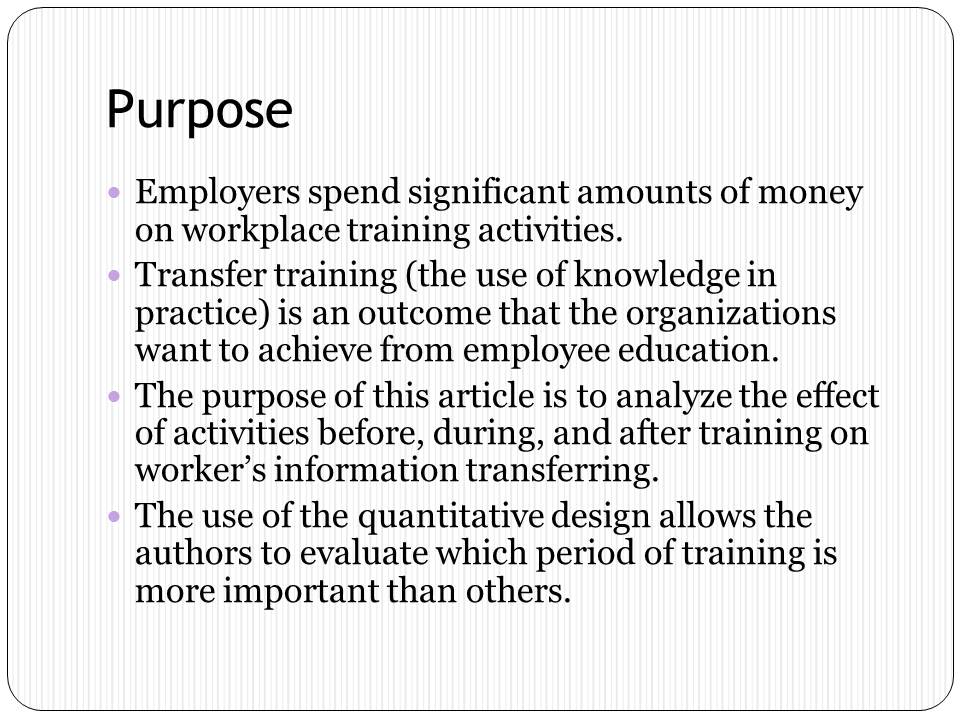
Goal
The central goal of the study is to compare the relationship between the transfer of training and “pre-training, during-training, and post-training factors” (Jaidev and Chirayath 55).
Transfer of knowledge is defined by the authors through such characteristics as improved performance, low rate of mistakes, use of new techniques, faster work completion and others.
The scholars pose the following questions:
- Do pre-training, during-training, and post-training factors influence the information transfer?
- Which of these activities may be the most influential?
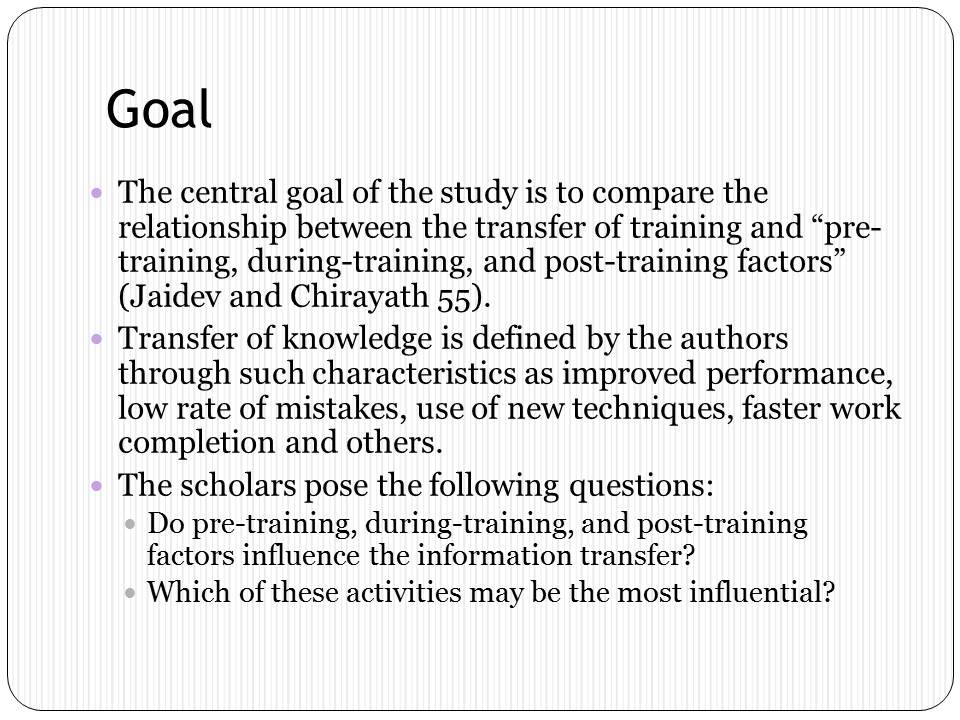
Literature Review
- Employee training is vital for many industries – more than 60 % of workers use the gathered knowledge immediately after education (Jaidev and Chirayath 55).
- Three main factors have an impact on employees’ training success: the design of the training program, workplace environment, and workers’ individual characteristics (Jaidev and Chirayath 55).
- Some of the best practices for improvement include coaching, supervisor-employee interaction, and job-relevant information.
- The attitudes of the manager and the involved employees may positively and negatively affect the outcome of training.
- Intrinsic motivation also has an effect on employees’ training – the opportunities are used effectively by interested participants.
- Successful training reduces turnover rates and improves communication.
- Previous findings consider goal-oriented training as highly effective in motivating employees.
- Moreover, long-term goals and high self-efficacy also affect the outcomes of training.
- Specific aspects of the workplace environment are also significant – management participation, involved employers, and peer support network.
- The direction of the organization and employees’ participation in the formation of educational programs increase the staff’s intrinsic motivation (Jaidev and Chirayath 57).
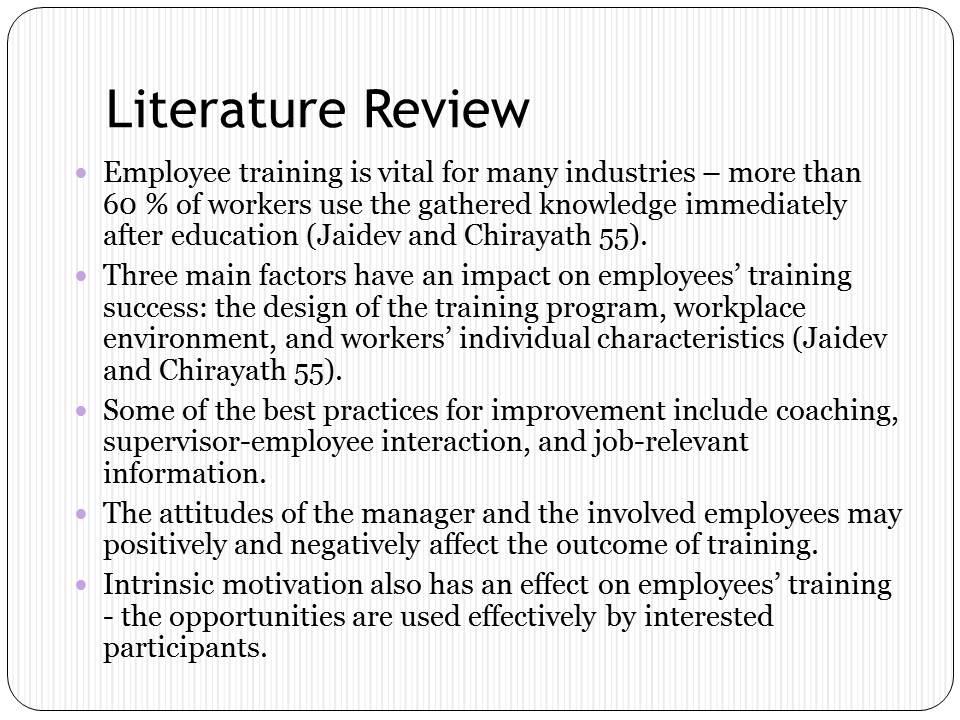
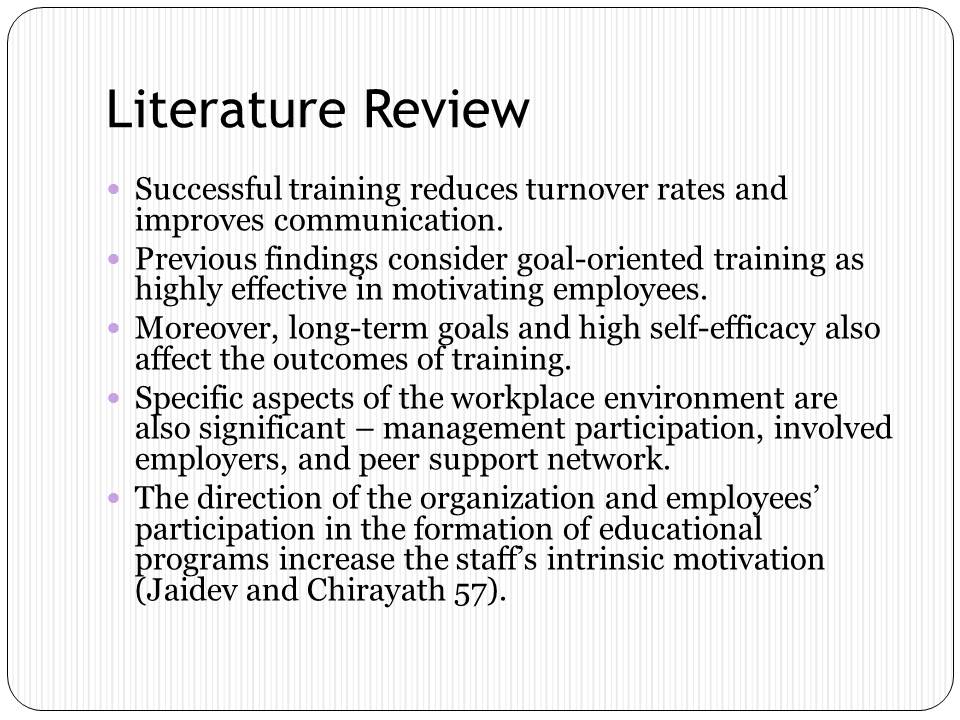
Main Information
- The authors separate all program-related factors into three stages.
- Pre-practice conditions: organizers, motivation, goal orientation, commitment, preliminary discussions.
- During-practice environment: strong relationships between supervisors and employees, peer support, goal-focused tasks, positive work environment, design of the program.
- Post-practice factors: final discussion, evaluation of the results, supervisor and coworker assistance in implementing the knowledge.
- The scholars present a model that analyzes the effect of the three described aspects (see fig. 1).
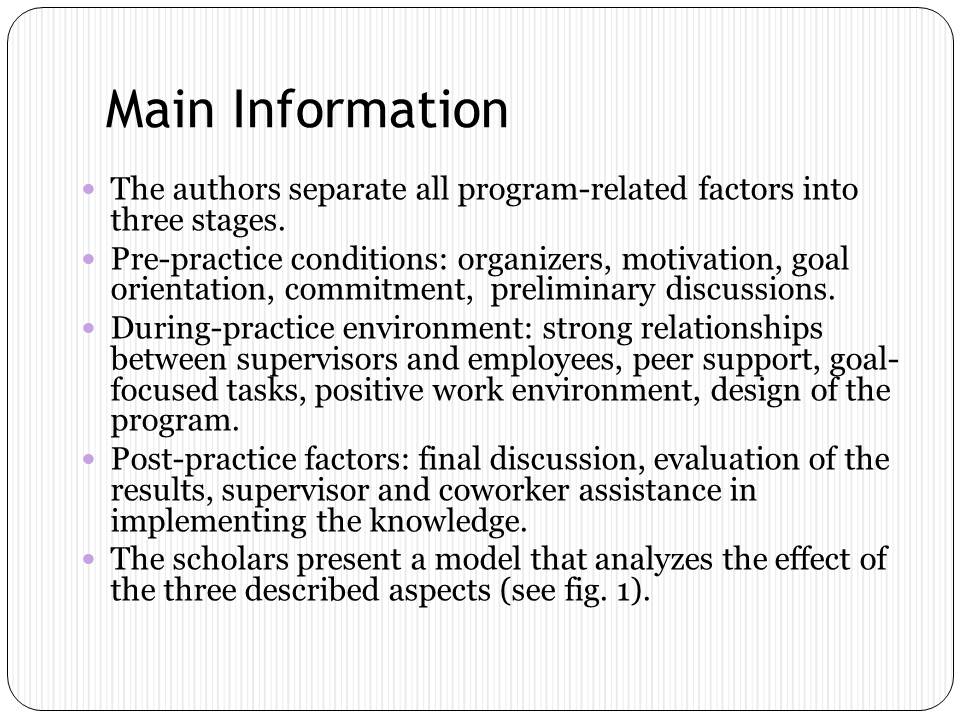
Research model
Transfer of training:
- Pre-training activites;
- During-training activites;
- Post-training activites.
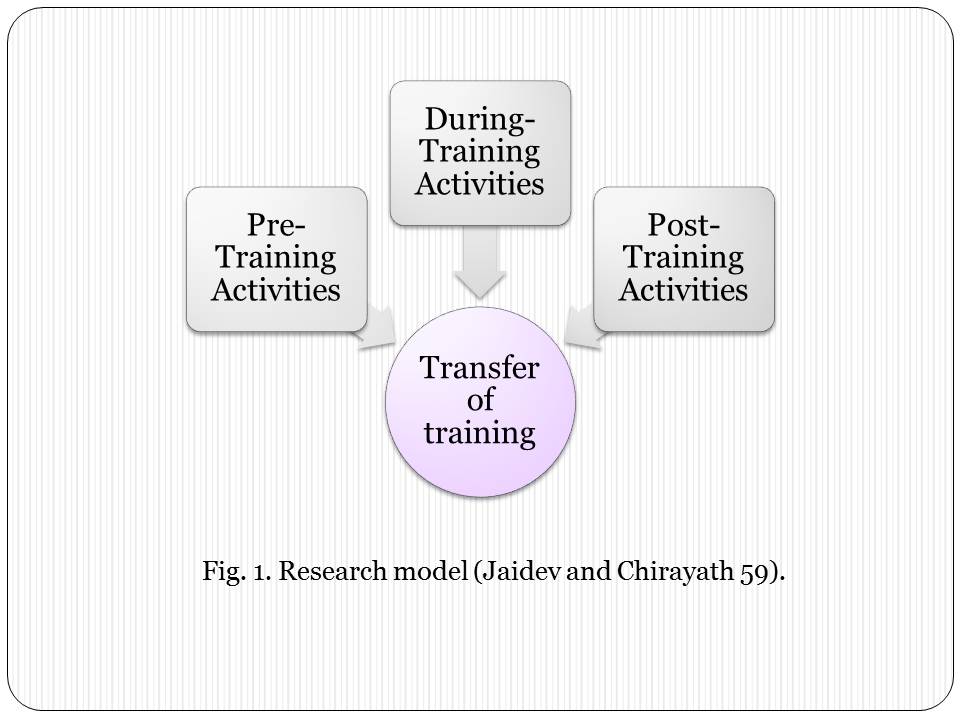
Hypotheses
The authors discover that each of the factors can impact the training outcomes in some capacity.
Using the information from the literature review, Jaidev and Chirayath form the following hypotheses:
- “H1: Pre-training activities are positively related to transfer of training;
- H2: During-training activities are positively related to transfer of training;
- H3: Post-training activities are positively related to transfer of training” (59).
The authors do not consider personal characteristics of employees in these hypotheses.
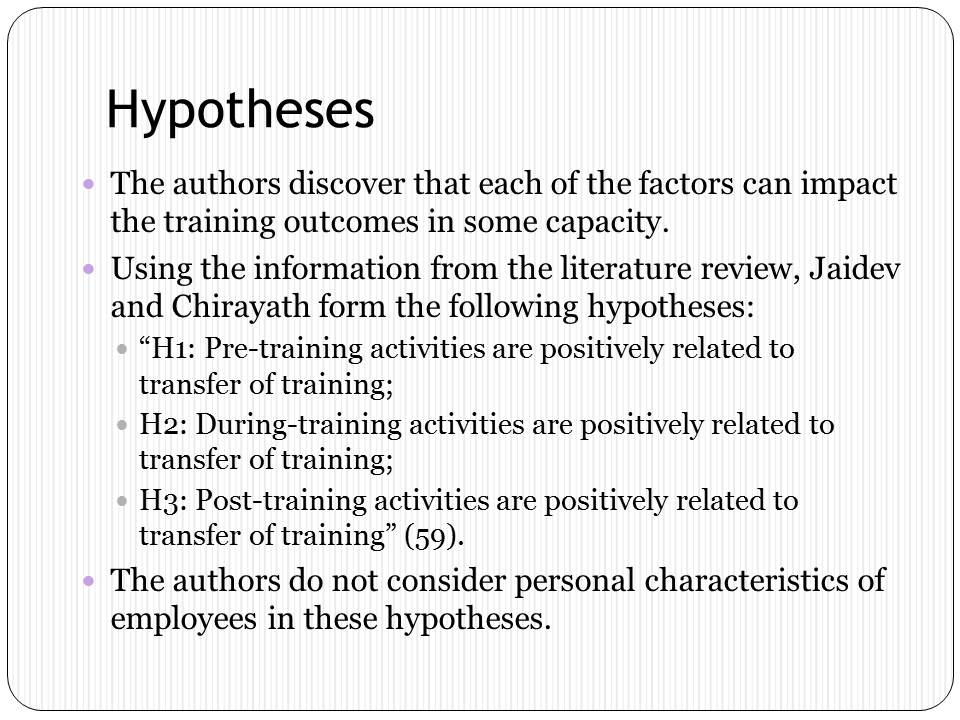
Research Methodology
Sample:
- Hospitality organizations that are interested in providing intensive training to their personnel.
- Staff from different Indian hospitality businesses.
Four companies were selected and contacted for the sample:
- The authors employed 148 respondents for the study.
- Data from 136 respondents were collected.
The questionnaires were sent to the managers responsible for development and learning activities. They administered the tests to the personnel.
The authors utilized a questionnaire with 3 blocks, each containing 13, 7, and 17 items respectively.
The first part analyzed the employees’ training needs and expectations:
- The entries include notifications, employees’ impact on task selection, pre-exercise discussion.
The second part evaluated various training incentives and tasks:
- Such aspects as group formation, peer support, examples, continuous feedback, and rewards are analyzed.
The final part assessed potential post-training activities:
- Practice after the end of the program, employee evaluation, employee teamwork after the program, and other outcomes are considered.
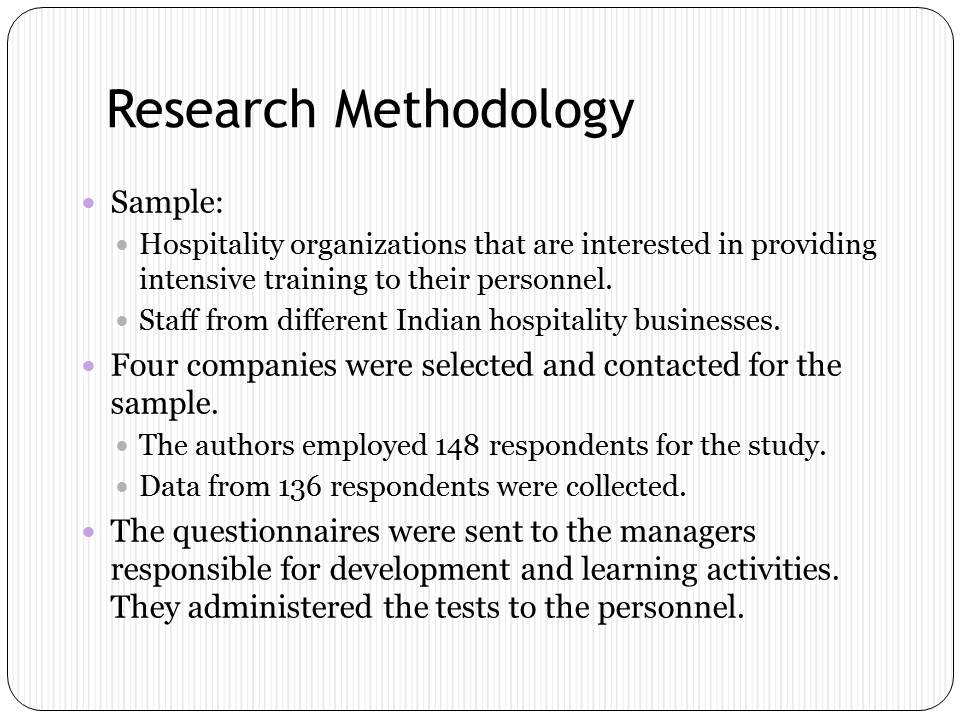
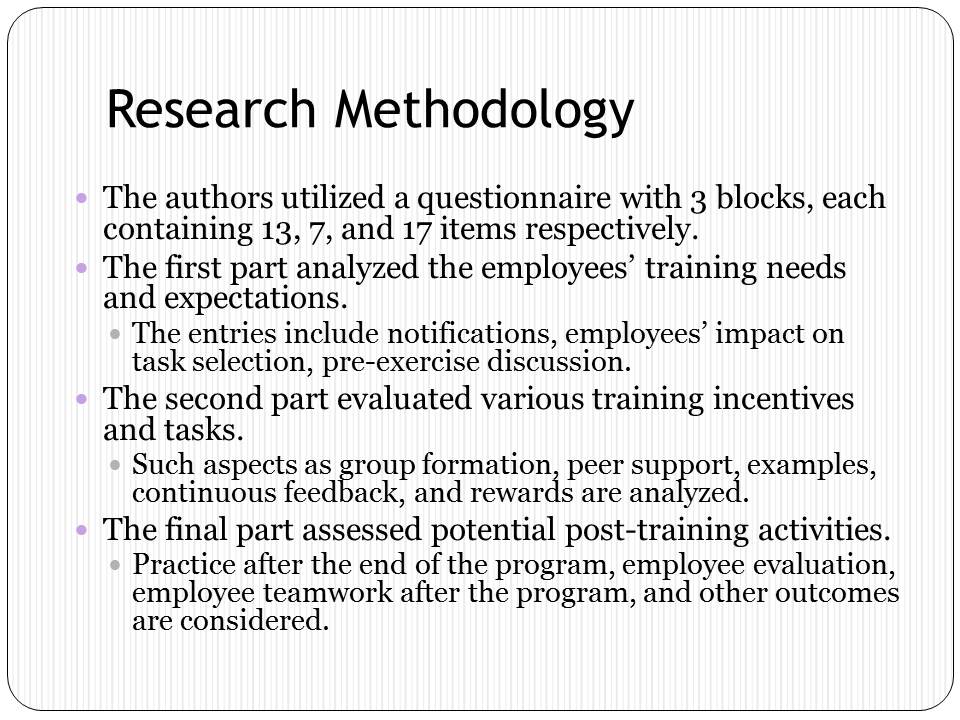
Measurement Scale
The answers were presented in the form of a 5-point Likert scale:
- “1 – Strongly disagree;
- 2 – Disagree;
- 3 – Neither agree nor disagree;
- 4 – Agree;
- 5 – Strongly agree” (Jaidev and Chirayath 60).
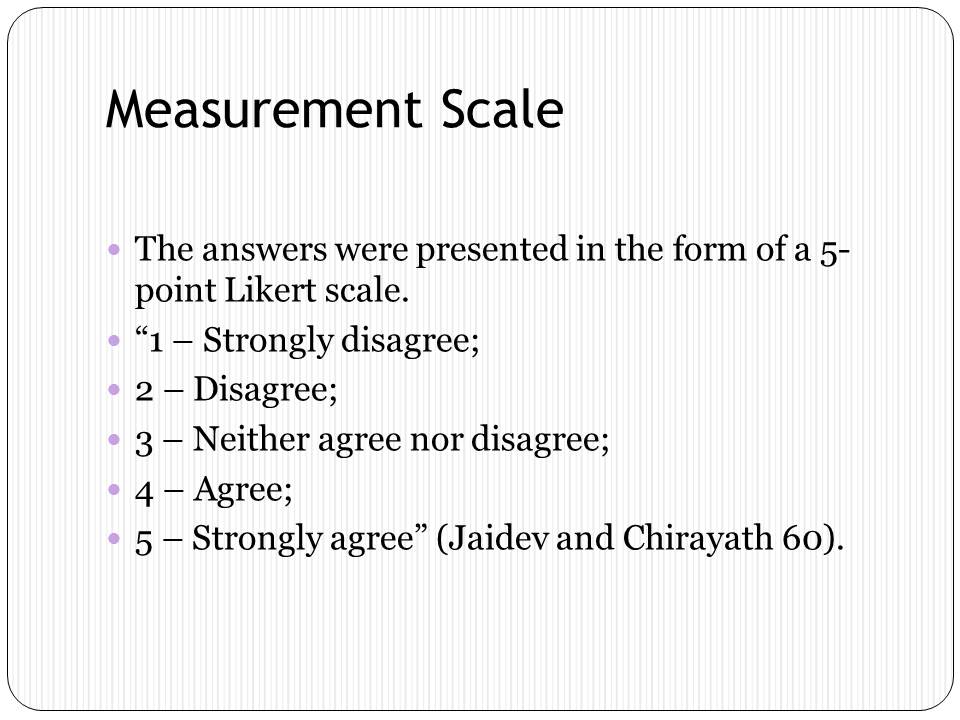
Results
- The authors employed correlation and regression analyses to assess the connection between training aspects and their influence.
- t-value and the linked p-value were calculated.
- Pre-training factors have a substantial impact on transfer of training.
- During-training tasks and environment strongly influence knowledge transfer.
- Post-training activities also impact the transfer, although less significantly than pre- and during- factors.
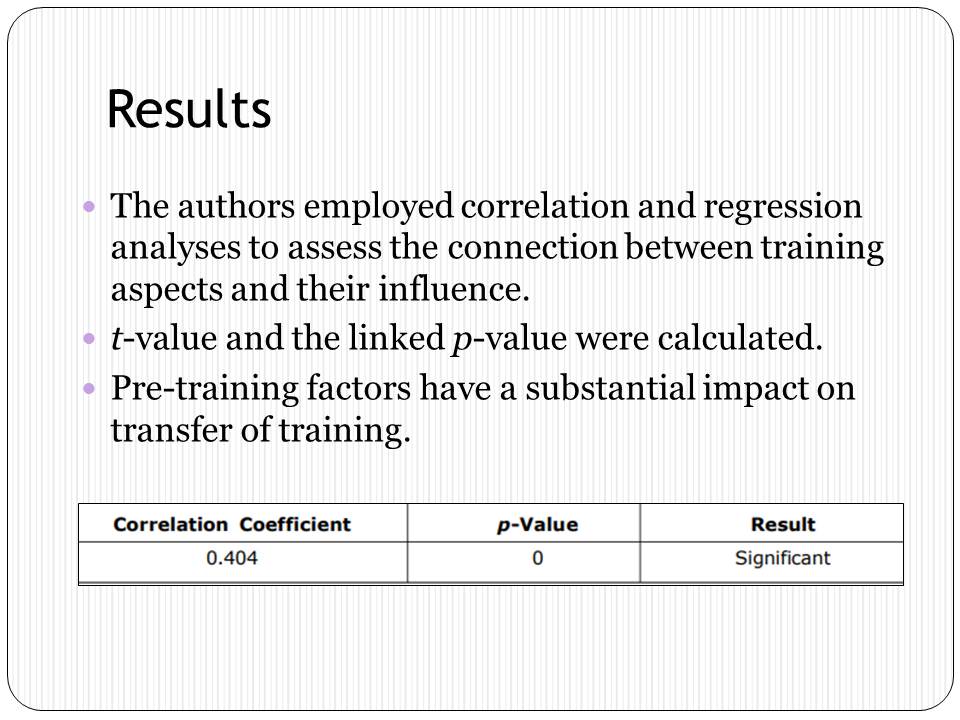
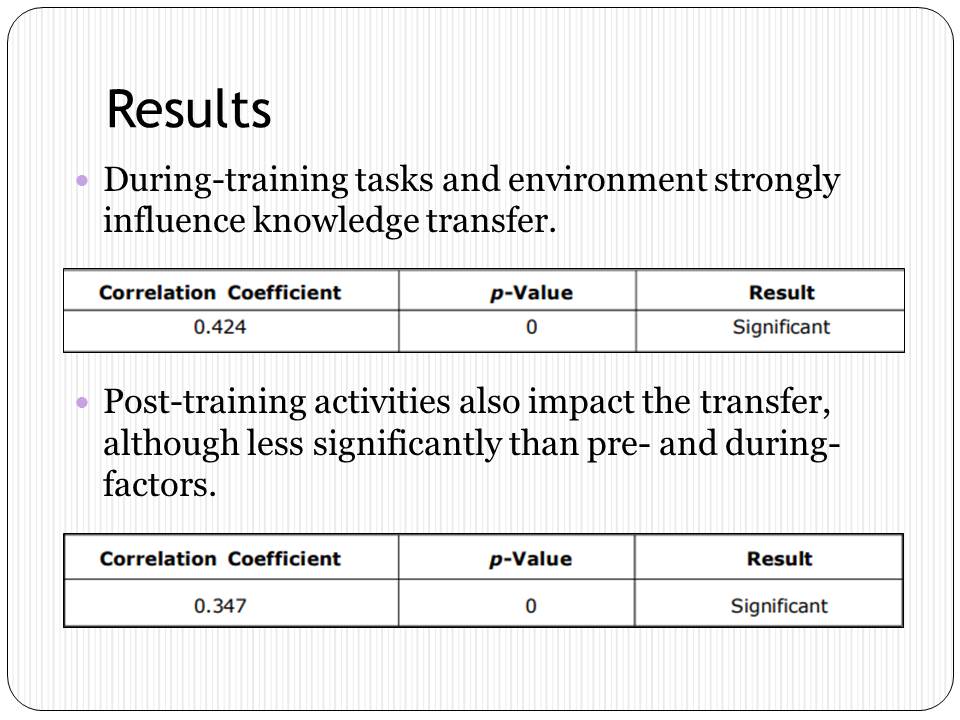
Limitations
The main limitation of this study is the small and highly restricted sample:
- 4 companies with one type of business model – hospitality firms.
- 136 returned answers from self-reliant participants.
- Respondents from one country were chosen, restricting the area of the results’ application.
The questionnaires do not consider specific factors separately, possibly distorting the final results.
Other factors influencing employees’ performance (personal characteristics, previous experience, current working environment, clients, and others) were not acknowledged.
Finally, the design of the programs was also not analyzed, which could possibly have an impact on the findings.
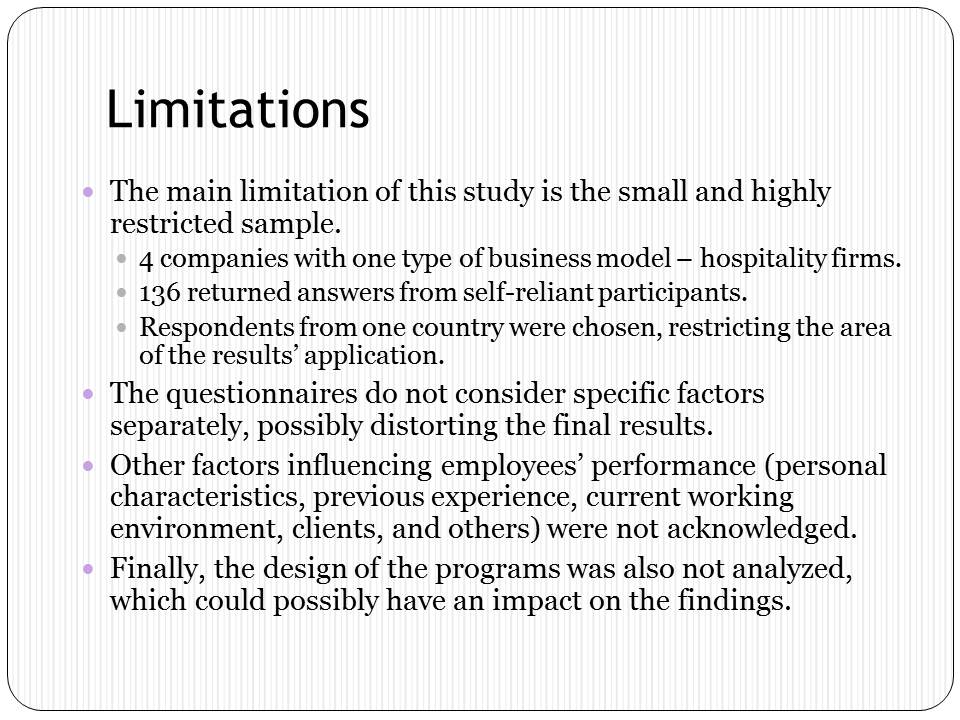
Conclusion
The study by Jaidev and Chirayath presents a small investigation into the connection between pre-, during-, and post-activities and the employees’ transfer of knowledge.
It employs a quantitative methodology to find whether different aspects of training programs and employees’ preparedness have an effect on the outcomes of education.
The authors show that many factors can affect the results of training, but they do not acknowledge personal characteristics and various business models.
Managers should consider the following details:
- Workers should be motivated to participate which can be achieved through the staff’s involvement in the exercise designing process.
- Rewards and incentives, as well as goal-oriented tasks, will increase the transfer of training rates.
- Post-training discussions and supervisor or peer support help the staff to use their new knowledge in practice.
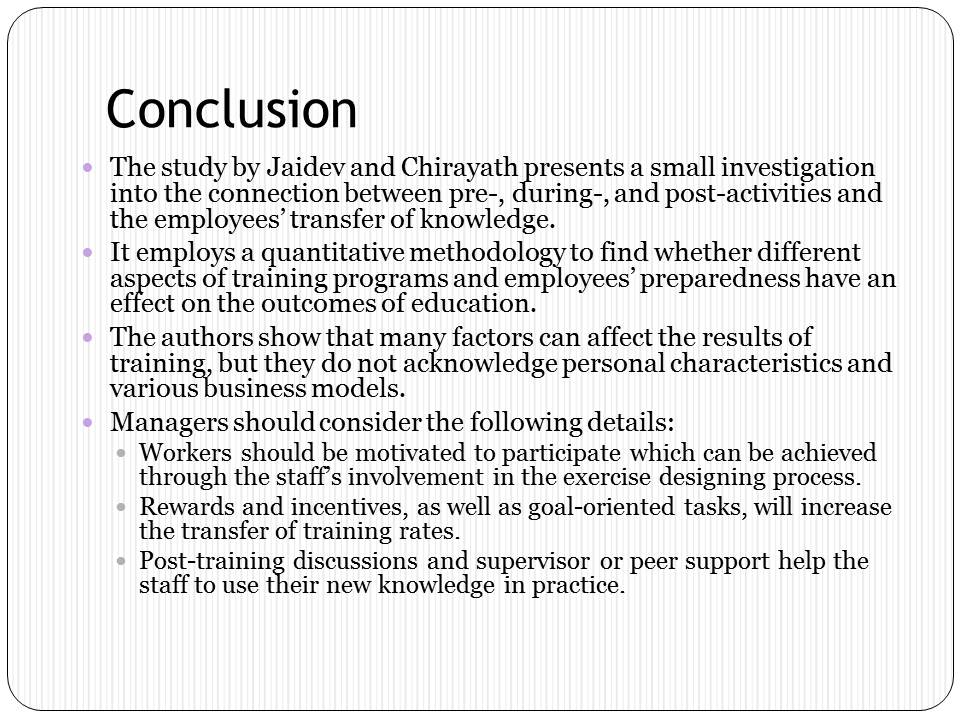
Works Cited
Jaidev, Uma Pricilda, and Susan Chirayath. “Pre-Training, During-Training and Post-Training Activities as Predictors of Transfer of Training.” IUP Journal of Management Research, vol. 11, no. 4, 2012, pp. 54-70.